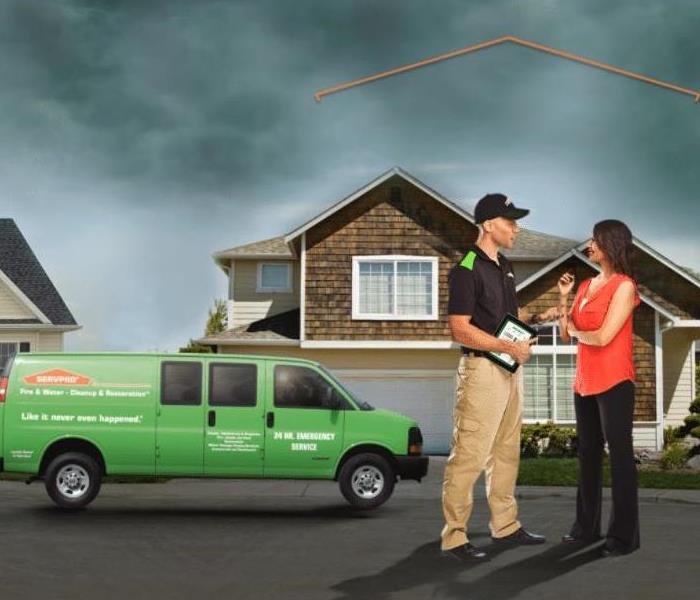After Effects of Water Damage
6/28/2021 (Permalink)
The damage caused by water can be devastating for property owners. Heavy rain or quickly melting snow increases the potential of this type of damage. Unwanted damage can result in costly damages to wood furniture, upholstery, electronics, household appliances, and plumbing equipment. Water damage also increases the risk of mold growth. The cost of the remediation process can be very expensive as well. Hiring a water damage restoration company can make the cleanup process easier to handle, as these companies employ experienced workers who know the best ways to repair or replace damaged items and help with water damage cleanup.
Causes of Water Damage
There are several possible causes of water damage. Leaky dishwashers, clogged toilets, broken pipes, broken dishwasher hoses, overflowing washing machines, leaky roofs, plumbing leaks, and foundation cracks are just some of the possible causes of water damage in homes and businesses. Floods, heavy snow, and heavy rain are other possible causes of this type of damage and can lead to having water in basements. Too much water can lead to minor problems such as water in basement areas, or it can lead to the destruction of homes and businesses. Once a home or business sustains water damage, it is important to start the water damage cleanup immediately. Starting water damage cleanup as soon as possible increases the likelihood of saving water-soaked furniture, carpets, rugs, clothing, and other items.
Categories of Water Damage
Assessing the severity of the damage is important for determining what is needed to start water damage repair and water removal. There are several different categories assigned to water damage. Category 1 refers to clean water, or water that does not pose a threat to humans. Possible causes of this type of damage include broken appliances or sink overflows. Category 2 water is also called gray water. Broken toilets, broken sump pumps, and seepage may cause category 2 water damage. Category 3 water is known as black water. The possible sources of black water damage include sewage problems and contamination of standing water.
There are also several classes of water damage. The class of damage is important when assessing water damage repair options. Class 1 is the least harmful form of damage. Materials absorb very little of the water from this type of damage. Water damage repair is the easiest in this type of situation. Class 2 has a fast rate of evaporation, which means that carpets and cushions may be damaged. Water damage repair is more difficult when it involves class 2 damage. Class 3 has the fastest rate of evaporation. In this case, the water may come from broken sprinklers or other overhead sources, soaking the walls and furniture. Class 4 requires special water restoration and water removal procedures. This type of damage may affect hardwood floors, plaster, and concrete.
Restoration Process
The water restoration process is an important one. Using the right procedures and materials can help people save cherished belongings and even prevent their homes from being condemned. Water restoration companies specialize in mitigating the effects of water, but the success for water damage restoration depends on the severity of the damage and the amount of water that caused the damage. Water restoration companies may hire outside experts such as SERVPRO of Southeast Portland to assess a property and determine a water restoration and water removal plan. SERVPRO of Southeast Portland uses high-tech equipment and well-documented procedures to control water damage. Water in basement areas may only require a short cleanup process, but water in other areas of a property will require extensive remediation.






 24/7 Emergency Service
24/7 Emergency Service
